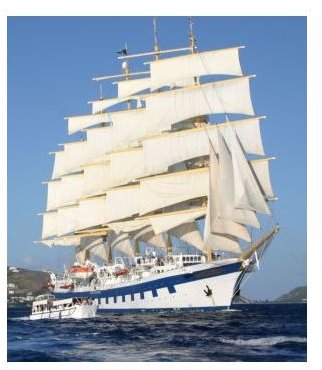Clipper Sailing Ships
Clipper Ship
The clipper is a type of early sailing ship that was first used in United States after the War of 1812. The term “clipper” was derived from the word “clip” which means to move swiftly, and was then assigned to any fast sailing ship. Clipper ships were basically merchant vessels famous for their speed. However, later, the term clipper was assigned to any fast moving vessel.
Technical Aspects
Technically, clippers were huge ships, usually with three masts and large square sails. Made with long voyages in mind, Clipper ships had massive masts and the maximum number of sails. Early clippers were generally narrow in length and had less cargo carrying capacity; however, the clippers built during the late 19th century had larger main deck areas.
The bow of clipper ships were made wide and slightly raked forward, which allowed them to move forward rapidly, cutting the waves. Moreover, the long lines of the ship combined with the enormous propelling force generated by the huge sails that allowed clipper ships to sail at a speeds considered unachievable during that time. Different types of woods were used in the construction of clipper ships.
Travelling Capability
Clipper ships could travel great distances in less time, which was the main reason that made them famous. As mostly valuable cargo was transported by clippers, high speed clipper ships attracted more profit. A ship that could sail 150 miles per day was considered a good ship for transportation at that time. A conventional clipper could travel at a speed of minimum 250 miles per day, with bigger clippers covering a distance of more that 400 miles in a day. This trait of clipper ships made them the most sought after ship for transporting cargo at that time.

Types of Clipper Ships
As their popularity increased, clipper ships were being made by ship builders around the world. Some of the famous types of clipper ships were the California Clipper, and the China Clipper or Tea Clipper. All these clippers were huge in sizes and had sharp bows for higher speeds. Ships with sharper bows meant greater speeds; however, sharper the bow, less were the cargo carrying capacity. The ships with the sharpest bows were known as “Extreme clippers.” Moreover, an approximate speed of any conventional clipper was around 16-18 nautical miles. Extreme clippers could even reach a speed of 20 nautical miles.
The size of a clipper ship varied according to the requirement of the cargo. With the size of the ship, the number of crew members on board the ship also varied. A conventional clipper ship carried around 25-50 sailors on board.
As the time passed, more and more robust clipper ships were made with iron keels and strong inner frame work. However, it was their upper parts, comprising of sails and masts, which required the maximum maintenance and were also expensive to maintain. In spite of this, clipper ships have been recorded of having a long life. Some clippers in the past have even had an active life of thirty to forty years.
Downfall of Clipper Ships
The downfall of clipper ships began when the transoceanic trade was affected by the reduction in freight charges. The introduction of steam ships, almost at the same time, also initiated the downfall of clipper ships. People stared making claims that in spite of their high speeds, clippers were fully dependent on wind power, which made them less reliable in comparison to steam ships. Also, maximum of the trade using clipper ships happened between Asia and Europe. Clipper ships were still used for trading in spite of the introduction of steam ships.The opening of the Suez Canal in 1869 introduced a shortcut and an easier way for the steam ships; however Clippers couldn’t sail efficiently through the canal. This affected the clipper ship industry drastically, which eventually lead to its fall. Moreover, ship builders started constructing clipper ships integrated with steam engines, which eventually lead to the final downfall of clipper ships with sails. However, clipper ships are still remembered for their speed, usability, and beauty.
